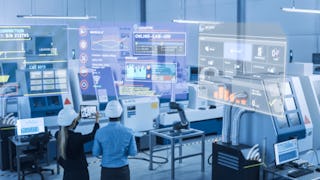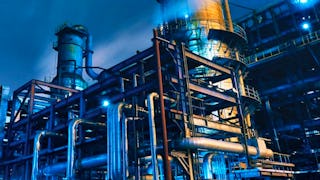Welcome to the comprehensive course on Welding Processes and Quality Control for Heavy Manufacturing. In this course, we will explore the fundamental principles, advanced techniques, and cutting-edge technologies essential for producing high-quality welded components used in process plant equipment and heavy manufacturing industries.
Welding Process for Manufacturing Process Plant Equipment: In the first part of this course, we will delve into the diverse world of welding processes used in manufacturing process plant equipment. From shielded metal arc welding (SMAW) to gas tungsten arc welding (GTAW) and beyond, learners will gain a comprehensive understanding of various welding techniques, their applications, and best practices. Practical demonstrations and simulations will allow participants to develop hands-on skills in selecting, setting up, and executing welding processes tailored to the specific requirements of process plant equipment fabrication. Special Welding Practice and Post-Weld Treatment Procedures - Heavy Manufacturing : Moving on, we will explore special welding practices and post-weld treatment procedures critical for ensuring the integrity and reliability of welded components in heavy manufacturing. Techniques such as thermite welding, friction stir welding, and explosive welding will be examined, alongside post-weld treatments like stress relieving, normalizing, and tempering. Through case studies and real-world examples, learners will understand how to apply these specialized techniques and procedures to optimize weld quality, minimize defects, and enhance the performance of welded components. Quality Control Techniques, Automation in Welding, and IoT 4.0: Finally, we will explore quality control techniques, automation in welding, and the integration of IoT 4.0 technologies in heavy manufacturing. Learners will delve into non-destructive inspection methods, dimensional checks, and standards and codes governing weld quality assurance. Additionally, they will explore how automation and IoT 4.0 technologies revolutionize welding processes, enabling real-time monitoring, data analytics, and predictive maintenance. Through hands-on exercises and demonstrations, participants will learn to leverage these advancements to optimize productivity, consistency, and quality assurance in heavy manufacturing operations. By the end of this course, participants will emerge equipped with the knowledge, skills, and practical experience to excel in welding processes, post-weld treatments, and quality control practices specific to heavy manufacturing. Whether entering the workforce or advancing in their careers, graduates will be well-prepared to contribute to the efficiency, reliability, and innovation of heavy manufacturing industries. Join us on this exciting journey as we unlock the secrets to success in welding and quality control for heavy manufacturing! Target Learners: Working Professional of Mechanical, Manufacturing and Chemical Engineers Undergraduate students of Mechanical, Manufacturing & Chemical Engineering Students from Manufacturing and Automation Post-Graduate Students of Computer Integrated Manufacturing Practicing Engineers in Process Plant equipment Diploma students of Mechanical / Manufacturing
















